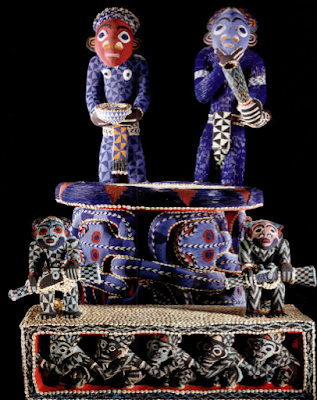The painting, Seduction
of Yusuf, was done by Persian painter Bihzad. The lines in this painting
are subtle but straight. This painting has a contrasting tone, all of the rooms
have different colors and patterns within them. The texture seems to be smooth
as if was painted on a canvas or some sort of paper. One thing that stuck out
to me the most was the shape of the picture; it is very geometric. Throughout the
picture there are squares, triangles, and rectangles that basically build the
whole painting.
I would describe the movement of this art piece to be
flowing because when you look at it your eyes are automatically drawn to look
through the rooms as if the people were moving through them. The colors of this
painting are quite vibrant, multiple color combinations are used. It does seem
to be a little worn making the colors slightly faded. My favorite part about this painting is the
visual variety it contains. Each rooms have their own detail, some with
beautiful patterns and others with elegant calligraphy. Every room is like its
own individual piece and then all put together making a very elaborate painting.









.jpg/521px-Todaiji_Monastery_Kongo_Rikishi_of_Nandaimon_I_(409).jpg)